I have a single NSViewController with the following layout, set using a storyboard:

The nextKeyView outlet of each of the NSTextFields is configured to be the next NSTextField in the order presented on the screenshot. For example, I chose the server NSTextField in IB and dragged from the nextKeyView outlet in Connectivity inspector to the login NSTextField, and did the same for the rest of the fields.
When the app is launched, any tab press on any of the field moves the selection to the first NSTextField. How do I achieve the desired tabbing between the fields?
I tried this in the respective WindowController, but to no avail:
- (void)windowDidLoad {
[super windowDidLoad];
self.window.initialFirstResponder = self.serverTextField;
}